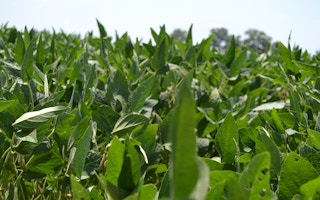Tropospheric and surface ozone pollution pose significant threats to global crop production and food security, but farmers are largely unaware of its impact on agriculture and damage to ecosystems, say scientists.
According to scientists, ozone, as an air pollutant, is highly oxidising and damages plant tissues. But because it is an invisible, odourless gas that often co-occurs with other stresses, such as heat stress, farmers do not directly experience it.
Baerbel Sinha, head of the Department of Earth and Environmental Sciences at the Indian Institute of Science Education and Research, in Mohali, India, says: “If one wants to look at where ozone is possibly disturbing the economics on a large scale, and where one may also be able to educate farmers better, it would be the legumes — soybean, chickpeas and beans in general are very ozone sensitive, their prices are not regulated and they display visible ozone damage on the leaf.”
Monitoring stations in agricultural areas can help farmers get a better understanding of ozone concentrations and raise knowledge and awareness of the issue, besides providing useful data for the science, say Sinha and other scientists who presented at a session on ‘Air Pollution and Sustainable and Resilient Food Production’ at the 2021 Sustainability Research and Innovation Congress (12-15 June) held in Brisbane, Australia.
Amos Tai, associate professor of the Earth System Science Programme at the Chinese University of Hong Kong says that where there is no ozone pollution, current crop production can be two to 18 per cent higher. “In our study, we have found that about 10 to 50 per cent of the observed crop sensitivities to excess heat can arise from the higher ozone that actually comes with higher temperature.”
A 2018 landmark study showed on a global scale how the spatial variation and severity of tropospheric ozone effects on yield compare with effects of other stresses such as heat and water stress, pests and diseases, rising CO2 and, to a lesser extent, aridity and nutrient stress.
Their modelling showed that the highest ozone-induced production losses for wheat are in India and China; for rice in parts of India, Bangladesh, China and Indonesia; for maize in China and the US; and for soybean in North and South America.
“At present ozone levels in the Indo-Gangetic Plain are sensitive to both nitrogen oxides (NOx) and volatile organic compounds (VOC) emissions, which fuel ozone production leading to high levels of ozone pollution,” warns Sinha. “Since the emissions of these pollutants look set to continue into the foreseeable future, we have to prepare for higher losses in the future.”
Adaptation options may play an important role in enhancing food supply while mitigation strategies are being implemented.
“Encouraging farmers to create windbreaks may actually protect crops not only against a bad storm, but also heat and ozone,” adds Sinha, “Wheat residue burning raises ozone levels over the Indo Gangetic Plains by 20 ppb (parts per billion). Farmers are burning it next to their own sugarcane and summer vegetable fields and damaging their own crops.”
Lisa Emberson, professor in environmental science at the University of York, in England, says that a lot of effort goes into increasing crop yields, through crop breeding programmes and irrigation. “However, we find that if you irrigate you actually make the crop more sensitive to ozone pollution so the benefit of the irrigation may be less than expected,” Emberson cautions.
“Similarly, crop breeding programmes tend to enhance gas exchange (increase CO2 uptake for photosynthesis). This has the undesirable associated effect of also increasing ozone uptake and is the likely reason why more modern varieties — for example soybean and wheat — have enhanced sensitivity to ozone pollution.”
This article was originally published on SciDev.Net. Read the original article.








